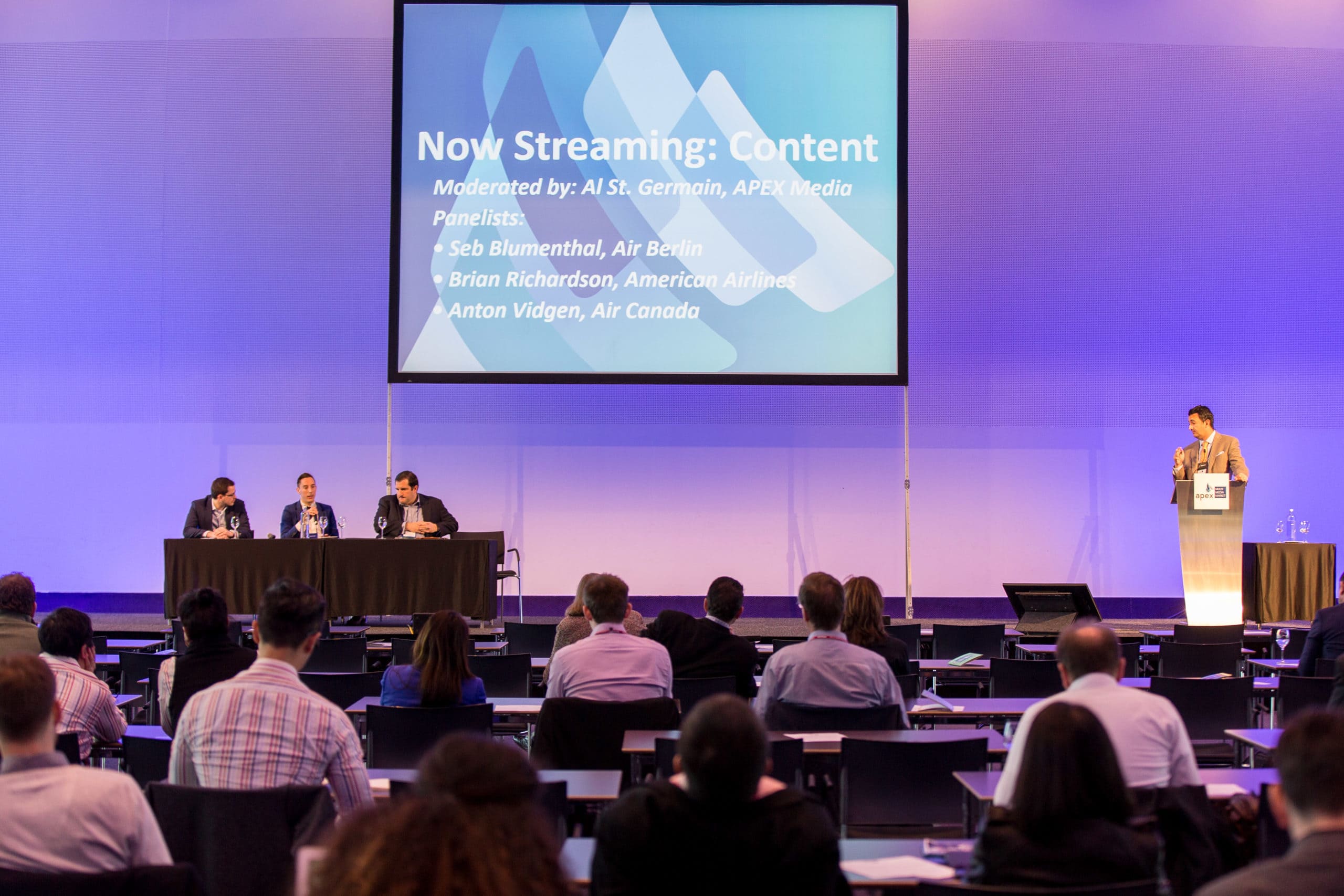Streaming Dreams: Airlines Discuss the Promise of Wireless In-Flight Entertainment
Share

APEX Insight: Wireless in-flight entertainment promises to transform the delivery of content to passengers, but the challenge of the airline industry is to meet the same entertainment demands on new platforms.
Wireless in-flight entertainment (wIFE) solutions have been revolutionizing the delivery of content to passengers on board – and for airlines, the new technology offers unique challenges and advantages.
“The biggest positives are that it’s lightweight, inexpensive and you can quickly drive consistency across the fleet,” said Brian Richardson, director of Inflight Entertainment and Connectivity for American Airlines, during an airline panel discussion at APEX MultiMedia Market in Amsterdam. American Airlines allows passengers to stream content to their devices on flights via its Gogo portal.
Additionally, Air Canada’s creative director, Anton Vidgen, noted that wIFE solutions will allow for fresher content to be on board, due to the advancing ease of delivery. The airline currently employs a streaming solution called player on Air Canada rouge, its subsidiary vacation arm. “One of the very exciting things about the streaming system is how flexible and innovative we can be.”
As Sebastian Blumenthal, manager, Cabin Interior and New Technologies, airberlin, pointed out, managing expectations will be key. “In terms of streaming in general, the expectation of passengers has grown so quickly,” he said. Blumenthal shared that for the German-based carrier, which allows passengers to stream via its airberlin connect app, it’s critical to get the crew on board with new technologies.

The evolving technology has not only placed new demands on flight crew, but, as Richardson points out, it requires a robust communications plan to support it. “The biggest challenge with wireless entertainment is for our customers to know it’s there. It’s an invisible product.” In addition to training the flight crew to be tech savvy, connectivity, announcements and pamphlets were cited by all panelists as methods of promoting passenger awareness of their products.
Windows of Opportunity
The panel was also unanimous on the continued demand for new release and early window content to be available on these platforms as well. “Undeniably, early window content is the most challenging piece,” says Vidgen. “We heard loud and clear from our passengers, at least in the early days, that they want that content.”
The unavailability of this content has forced airlines like Air Canada to be clever in how it advertises its titles. “On Air Canada’s mainline embedded IFE, we have a category that says ‘New Releases,'” he explains. “We don’t have that on the streaming platform because it would be empty.” As a workaround, the airline offers its selection by genre on Air Canada rouge.
“People want something they would otherwise have to go buy,” added Richardson. As Blumenthal pointed out, that doesn’t necessarily have to be movies. “Movies aren’t as relevant for shorter flights.” Most airlines are trending toward the flexible, lightweight wIFE alternative. “Early window is always an issue, but on short- and medium-haul flights, it’s not really as relevant.”
“Content wants to be free.” – Anton Vidgen, creative director, Air Canada
“Content wants to be free,” Vidgen added. Beyond calling for encryption and security that would enable the streaming of early window content, panelists also expressed the need for a seamless content experience throughout a single journey and across the airline’s entire network. “If there was some way that you could start your movie when you book your ticket… and then finish it on the beach, that would be very cool… But there is something called Netflix that is challenging that.”


